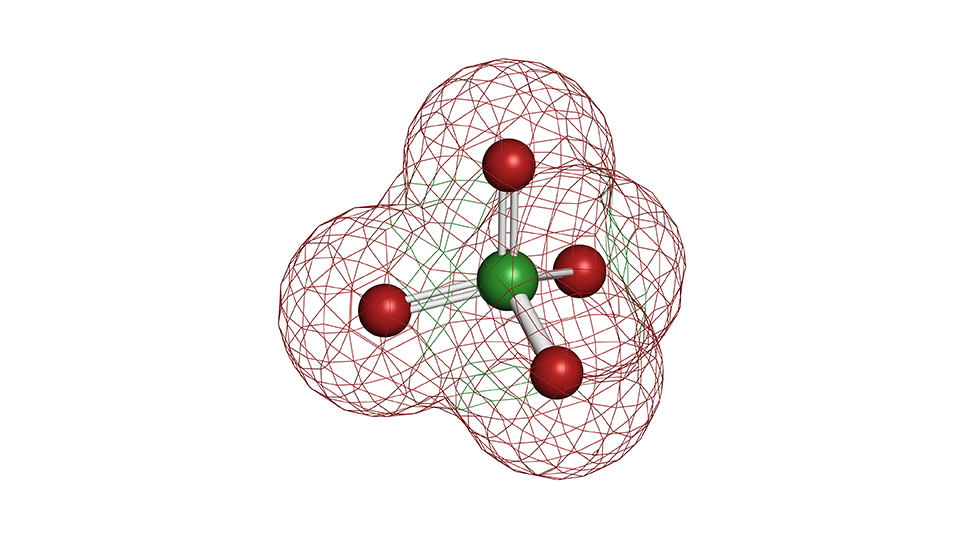2024.01.25 Thursday
Deep Learning Reveals Molecular Secrets of Explosive Perchlorate Salts
Researchers develop a novel deep learning method to study the properties of crystals using only the analysis of their structure

Perchlorates are a class of compounds that are notorious for their explosive nature. This raises safety concerns during experiments involving complex compounds that contain perchlorate ions, since explosions can be triggered even by the slightest shock or heat. It is, therefore, important to study their molecular structure and understand the reason behind their explosive nature.
In this context, a method called the Hirschfield surface analysis has been extensively used for visualizing and quantifying the crystal structure and molecular interactions of crystal compounds. Moreover, a two-dimensional fingerprint plot derived from the Hirschfield analysis vividly shows the complex interactions in crystals. Despite their advantages, however, these methods rely only on the judgment of the human eye, limiting their overall effectiveness. Looking for a way to overcome these limitations, recent studies have explored the use of deep learning and artificial intelligence (AI) methods for analysis. These studies have pointed to the potential benefit of using AI to unveil the features that are challenging to discern for humans.
Now, to fully realize the potential of Hirschfield surface analysis, a team of researchers, led by Professor Takashiro Akitsu from the Department of Chemistry and the Center for Fire Science and Technology at the Tokyo University of Science (TUS) in Japan, recently employed deep learning to analyze the Hirschfield surface of salen-type metal complexes. The study team also included Mr. Yuji Takiguchi, Mr. Shintaro Suda, and Assistant Professor Daisuke Nakane, all from TUS.
Salen-type complexes are an emerging and lucrative area of research, primarily due to their diverse functions. "Actual experiments on explosive and thermal properties of these materials are accurate but extremely dangerous, and therefore, using AI to study these properties by solely analyzing the crystal structure can be quite advantageous," explains Prof. Akitsu. The findings of this study were published online in the journal FirePhysChem on 30 December 2023.
The team developed extensive datasets of the Hirschfield fingerprint plots of the salen-type metal complexes stored in the Cambridge Crystal Database (CCDC) and used deep learning to study the features of the crystal structure that contribute to their explosiveness. To this end, the researchers also employed a special variational autoencoder using which they transformed the information embedded in the fingerprint plot images into a low-dimensional vector. This enabled them to quantitatively study the shapes of the plots, which, until now was only done qualitatively. Their analysis revealed that the salen-type metal complexes lack any distinctive structural features, indicating that their explosive nature is linked to the chemical bonding of the perchlorate ions and their surrounding intermolecular interactions.
Highlighting the importance of this study, Prof. Akitsu explains, "Traditionally, the field of crystal engineering has concentrated solely on the interactions of small molecules in crystals. But in the future, interactions in complex systems will gain significance. This means that studying their intermolecular interactions will become even more crucial. Our novel method can help in studying such interactions by understanding the crystal structure alone. Moreover, it can also contribute to the discovery of new drugs and advance catalytic research."
This study also makes use of the CCDC crystal structure database, which, despite having more than 1 million entries, is still underutilized. Moreover, the innovative method proposed in this study can promote the use of this database, and can lead to the discovery of new and interesting compounds.
Overall, the study offers insights into the explosive nature of perchlorates, besides also presenting a safer data-driven method for studying the physical properties of compounds, advancing crystal engineering and energetic materials research!

Image title: Deep learning analysis (right) of Hirschfield fingerprint plots (left).
Image caption: The proposed novel method uses deep learning to study the physical properties of compounds such as explosive perchlorates by using only their crystal structure and thus avoiding dangerous experiments.
Image credit: Takashiro Akitsu from Tokyo University of Science
License type: CC BY 4.0
Usage restrictions: Can be reused with appropriate attribution
Reference
| Title of original paper | : | Deep-learning prediction of safety moiety of salen-type complex crystals towards explosive perchlorate salts |
| Journal | : | FirePhysChem |
| DOI | : | 10.1016/j.fpc.2023.12.004 |
About The Tokyo University of Science
Tokyo University of Science (TUS) is a well-known and respected university, and the largest science-specialized private research university in Japan, with four campuses in central Tokyo and its suburbs and in Hokkaido. Established in 1881, the university has continually contributed to Japan's development in science through inculcating the love for science in researchers, technicians, and educators.
With a mission of "Creating science and technology for the harmonious development of nature, human beings, and society," TUS has undertaken a wide range of research from basic to applied science. TUS has embraced a multidisciplinary approach to research and undertaken intensive study in some of today's most vital fields. TUS is a meritocracy where the best in science is recognized and nurtured. It is the only private university in Japan that has produced a Nobel Prize winner and the only private university in Asia to produce Nobel Prize winners within the natural sciences field.
■
Tokyo University of Science(About TUS)

About Professor Takashiro Akitsu
from Tokyo University of Science
Takashiro Akitsu is a Professor at the Department of Chemistry, Faculty of Science, Tokyo University of Science (TUS), Japan. He graduated from Osaka University and obtained his Ph.D. in Physical and Inorganic Chemistry in 2000 and went on to study physical and bioinorganic chemistry at Stanford, before moving to TUS. He joined the TUS as a Junior Associate Professor in 2008 and became a Professor in 2016. He has published 220 articles and book chapters and served as an editorial board member in many international peer-reviewed journals. His current research areas involve the study of imines, Schiff bases, coordination chemistry, and crystal structures.
Laboratory website 
Official TUS website 

